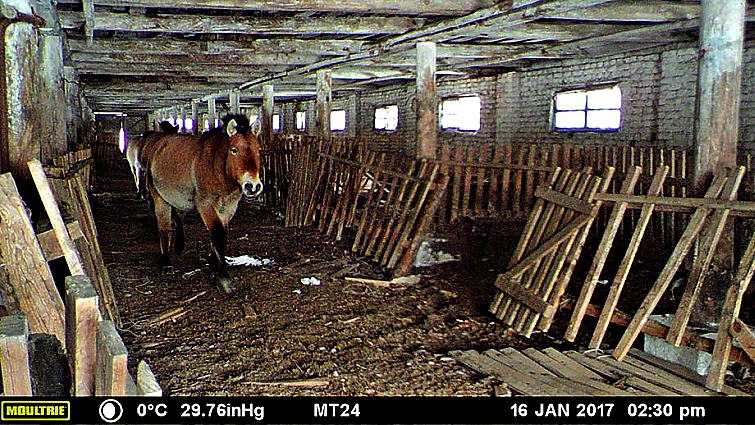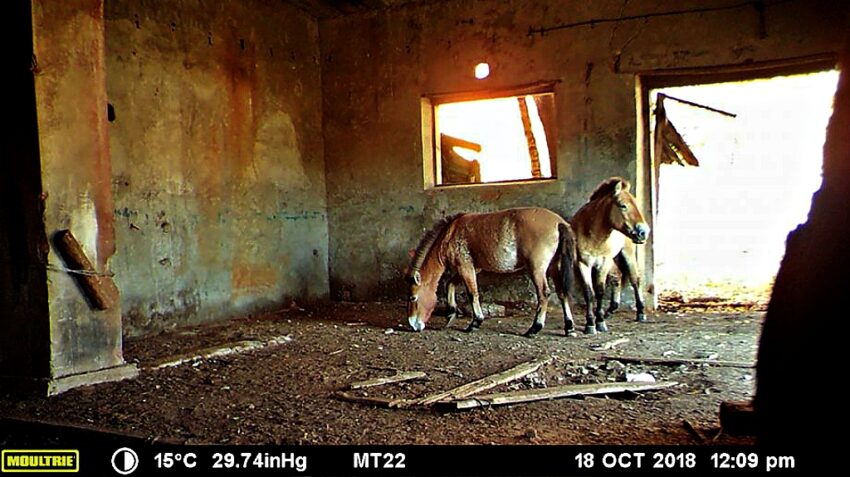Scientists at the University of Georgia published a research that led light to a shocking discovery.
Rare Prezwalski’s horses were captured using the Chernobyl Exclusion Zone (CEZ) as a shelter. More than 11,000 images showing these endangered species were captured by Peter Schlichting, who used motion-activated cameras in the Polesie State Radiation Ecological Reserve, the Belarusian side of the exclusion zone.

Prezwalski’s horses were recorded 35 times at nine of 10 monitored structures during winter, and 149 times at all eight monitored structures over the summer. Fifteen years ago, 36 Przewalski’s horses were brought to the restricted border of Belarus and Ukraine to increase the biodiversity in the Chernobyl Exclusion Zone. These horses were named after Polish-born explorer Nikołaj Przewalski who discovered them first in Mongolia.

Their body color varies from reddish brown to dark beige with distinctive white bellies. The number of horses nearly doubled in 2008 but the lead investigator, Schlichting, says that the figures are still considered too low to sustain a population. “Our results indicate Przewalski’s horses routinely use abandoned structures in the CEZ,” said Beasley, associate professor at SREL and the Warnell School of Forestry and Natural Resources.

He added that “As a result, these structures can serve as important focal points for research and management to obtain key demographic information such as age, sex ratio, population size, and genetic structure.” The footage shows that the horses use the structures for shelter, sleeping, breeding and they often stayed in the buildings for more than 5 hours.

